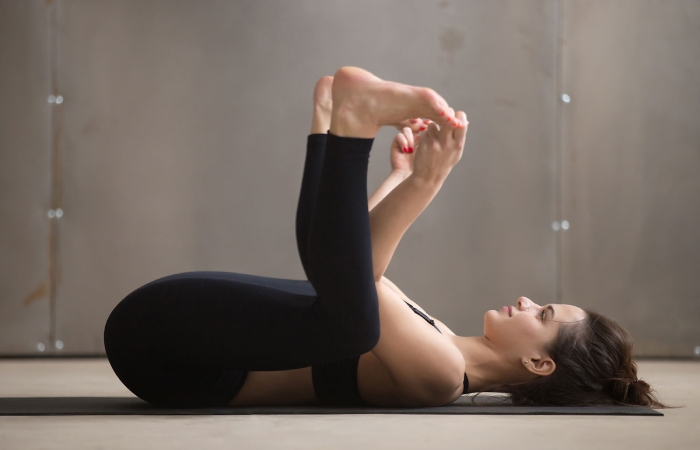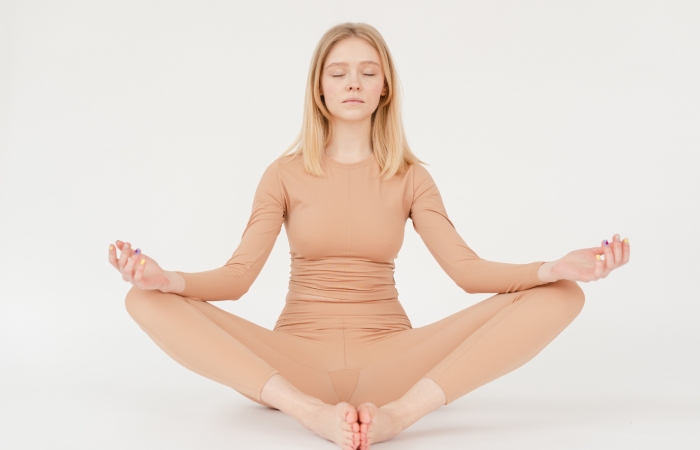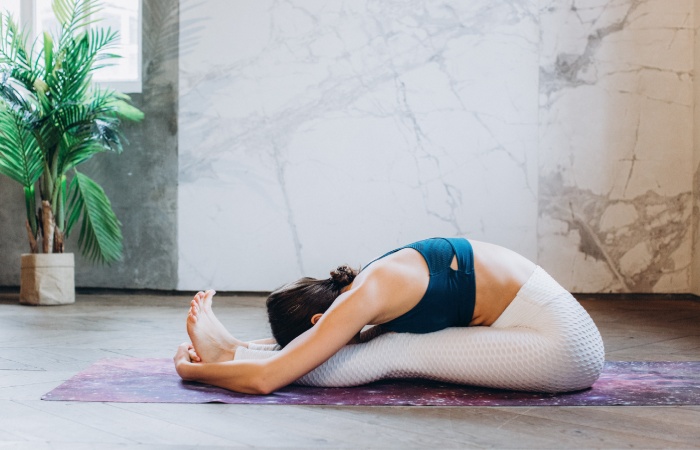The practise of Yoga offers many benefits, but one of the best known – and immediate – is to improve our flexibility. It helps, among other things, reduce the rigidity of our body and make it easier for us to maintain good body posture. Although being flexible is not the only important thing – balancing strength and flexibility is a better idea – it does bring us benefits. The practise of Yoga helps us to achieve this. With these five postures or asanas, we will be able to work on this flexibility.
Table of Contents
Half Pigeon Pose (Ardha Kapotasana)

The half pigeon posture is one of the best known in Yoga. This posture works the flexibility of our legs and that of the hip and its opening, as well as the back. We can get into this pose from a downward-facing dog or a sitting position. If we arrive at the first one, we take one of the legs forward and place it between our hands; we support the knee, then the leg and the foot on the ground, flexing it. The other leg we stretch behind. Next, we can extend the trunk forward by supporting the forearms or try the chest if we have it available.
Clamp or Half Clamp Pose (Uttanasana)

Although it seems simple, this posture helps to work on the flexibility of the legs and back. We can do it either with the feet hip-width apart or with them together. The feet firmly support the ground, with the fingers of the same well stretched. Exhaling, we flex the trunk forward and rest our hands on our legs. If we are beginners or have little flexibility, we will not be able to go down much. In that case, we do not need to stretch our legs completely, being able to maintain a specific flexion, or we can use blocks to help us. Little by little, we can reduce it. We can also start by performing the position of the half clamp and, from there, move forward.
Happy Baby Pose (Ananda Balasana)

This position is enjoyable, but it gives us a lot of flexibility. Lying on our backs, we bring our knees to our chest, and, slightly opening, we grab the outside of the feet with our hands. Depending on our flexibility, we can do it from the inside or outside of the legs. Of course, the ankles and knees will have to align at a 90-degree angle and the feet active.
Cobra Pose (Bhujangasana)

Flexibility comes from all body areas, not just the legs or the back. Working on the opening and flexibility of the chest or abdomen is also very important. For this, the position of the cobra is advantageous. We can get to it from a plank or stretch out on the floor face down. We support the palms of our hands on the ground and inhale. Stretch the arms and raise the chest. The hip stays on the floor.
Butterfly Pose (Baddha Konasana)

It works as a stimulation for the internal organs of the abdominal area, circulation in the pelvic area, opening of the hips and chest, and stretching parts of the body that normally remain “closed”, such as the groin, and abductors, etc. and lower abdomen.
Sit with your legs stretched out and your back straight to perform this pose. Then move your feet to the inside, bringing the soles together. The knees should go down as much as possible. Remember not to round your back and hold the position for 7 to 10 breaths.
The Cow Face (Gomukhasana)

With its somewhat strange name and odd movements, the cow face pose is nevertheless a perfect asana to gain flexibility, especially for the shoulders. This posture, whose real name is Gomukhasana, also allows you to stretch your knees, hips, and chest.
Sit down and do the lotus posture. Then, raise the opposite hand to your highest knee and put it behind your back on top. Next, place the other hand behind you, just below the shoulder. Finally, join them on your back, with an open chest and a straight back.
The Seated Pinch (Paschimottanasana)

The seated pincer is a somewhat tricky pose as it may look easy, but it is more complicated than it seems. It even requires a lot of practice and patience to perform correctly. If you can’t get too low or reach your feet at first, don’t try to force it so you don’t hurt yourself.
Sit on the floor with your back straight and your legs forward. Take a breath in and exhale as you lean forward, performing the movement from the hips and not from the waist. If you can’t grasp your feet with your hands, you can use a rubber band. Hold the place for 1 to 3 minutes.
Extended Triangle Pose (Trikonasana)

It is a variation of the triangle pose used by beginners and professionals alike and stimulates the opening of the hips and abdominal organs. Yoga beginners advise keeping their heads in a neutral position if they have difficulty lifting it.
Begin by standing on a mat and taking a long step with your right leg out to the side. The legs should separate from each other and be well stretched. The right foot should point out, and the left foot should point forward. Then, form a cross with your arms and lower yourself by bringing your right hand towards the leg on the same side while raising your left arm, as seen in the image.
Wide Angle Pose Prasarita (Padottanasana)

The lower extremities and the spine benefit from practicing this yoga posture, as it strengthens the feet and legs by stretching the muscles and the spine, even helping to relieve back pain.
Start by standing with your back straight. Next, separate your legs wide, bring your body forward, and then down, holding your hands on your legs. Hold the spot for a minimum of 30 seconds and up to 1 minute.
Conclusion
Doing a regular yoga poses routine is a highly effective way of easing tension in your muscles and building flexibility. The key is to start slowly and gradually increase the time you can hold a pose with the correct form.
Also Read: How To Improve Exercise Performance?



